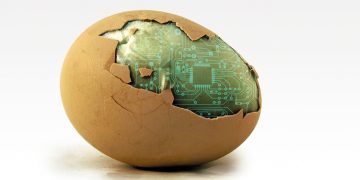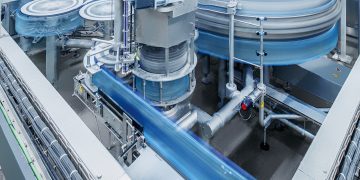Energy drinks are one of the fastest growing beverage segments globally and maintained growth through the pandemic despite major shifts in retail channels, including their most important – convenience. As major brands strategically responded to consumer adjustments, energy drinks are experiencing a wider reach than ever before. Glanbia Nutritionals shared trends of the industry. Here’s a look at energy drink trends to watch in 2022.
Energy drinks shifting to address consumer trends
Energy drinks remain one of the most popular functional beverages in the market, promising consumers more physical and mental energy through ingredients such as caffeine, taurine, guarana, ginseng, and B vitamins. And while increased energy has a wide appeal, energy drinks have traditionally been marketed to a relatively narrow segment of teenagers and young adults.
Now, we’re seeing energy drinks evolving, especially through key changes in ingredients and nutrition that can attract a broader consumer base. Energy drinks are no longer just competing with soda but with sports nutrition drinks and coffee drinks as well. This strategy seems to be working, as indicated by a diversification of energy drink occasions. Today’s consumers use energy drinks at work, after exercising, and during leisure activities.
2022 energy drink trends
To gain insights into some of the innovative ways energy drink manufacturers are connecting with consumers, here’s a look at the emerging trends in energy drinks:
1.New flavors
Even major energy drink brands have been taking chances on new flavors to attract new consumers. Examples include Red Bull The Coconut Edition and Rockstar Recovery in Marshmallow. Newcomer Coca-Cola Energy is showing that cola flavor can work for an energy drink, too. But perhaps Bang takes the cake with its inventive flavors that include Birthday Cake Bash, Key Lime Pie, Champagne, and Frosé Rosé
2.Sugar free/calorie free
Brands are also releasing sugar-free and even calorie-free energy drinks. These energy drinks address the need for healthier options, which can benefit athletes or anyone who’s watching their weight. Sugar-free varieties can also be valuable for gamers who want to avoid a sugar crash. Red Bull, Monster, and Rockstar all have sugar-free and calorie free versions now, indicating an exciting new direction for energy drinks.
3.Coffee energy drinks
Monster is appealing to coffee drinkers with its Java Monster line: RTD hybrid beverages that contain coffee, milk, and cream, plus all the energy ingredients you’d expect from Monster. Flavors include Kona Blend, Mocha, French Vanilla, and Farmer’s Oats (which uses oat milk instead of dairy). This move has Monster competing head-to-head with Starbucks Doubleshot Energy Coffee, a hybrid beverage from the coffee world.
4.Sports nutrition ingredients
Sports nutrition is another area of expansion for energy drink brands, as more brands are adding performance and recovery ingredients like protein and amino acids. For example, Monster’s Muscle Monster Energy Shake offers 27 grams of protein from milk protein concentrate, while Monster Hydro Super Sport is fortified with BCAAs, calcium, and magnesium, plus extra caffeine. Bang energy drinks contain BCAAs, EAAs, and creatine.
Another brand blurring the lines between sports nutrition and energy is Powerade’s Ultra, infused with creatine, BCAAs, B vitamins and more electrolytes. This product looks like a sports drink but the creatine & BCAAs elevate this to a sports performance standard.
5.Formulated for gamers
Energy drinks for gamers is another area that’s seen recent innovation. These next gen esports nutrition products are using functional ingredients associated with improved focus and reaction time, as well as vision and cognitive support. Besides caffeine, these energy drinks might include lutein, choline, Bacopa monnieri, sage, and L-theanine. Low or no sugar formulas are important for these products, with “no crash” a popular emerging claim.




















